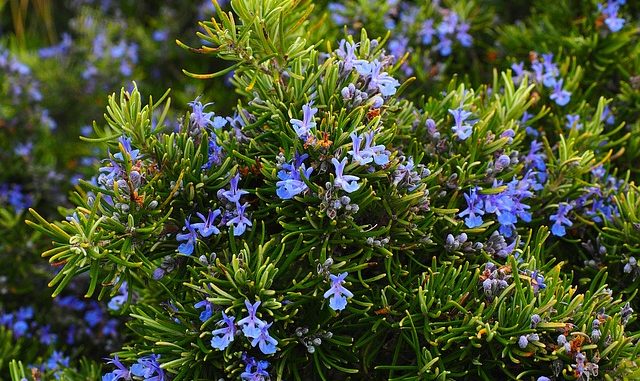
Rosmarinic acid (RA) is a caffeic acid ester found in a variety of plants, but it is especially abundant in herbs in the Lamiaceae family (Cuvelier et al., 1996; Janicsák et al., 1999). The greatest sources are found in Rosemary species. It has also been identified in over 77 species of Lamiaceae, in concentrations ranging from 0.01 to 9.30 mg RA per gram of plant material (Janicsák et al., 1999).
Polyphenols in general, including RA specifically, have been shown to be exceptionally high in garden sage (Salvia officinalis L.) (Janicsák et al., 1999; Zheng and Wang 2001; Wang 2004; Bandoniene et al ., 2005; Lamien-Meda et al., 2010). Reported levels of RA in S. officinalis range from 1.2 mg/g (Zheng and Wang, 2001) to 14.1 mg/g of fresh weight (Wang, 2004), although RA content can vary widely, depending on the growing location (Lamien-Meda et al., 2010).
Nutritional Benefits
Rosmarinic acid is known to exert a number of effects as an antioxidant, anti-inflammatory, anti-mutagen and has neuroprotective properties (Ly et al., 2006; Alkam et al., 2007). It is known to attenuate inflammation produced by diabetes and oxidative stresses.
References
Alkam, T., Nitta, A., Mizoguchi, H., Itoh, A., and Nabeshima, T. (2007). A natural scavenger of peroxynitrites, rosmarinic acid, protects against impairment of memory induced by Aβ25–35. Behav. Brain. Res., 180, pp. 139-145.
Ly, T.N., Shimoyamada, M., and Yamauchi, R. (2006). Isolation and characterization of rosmarinic acid oligomers in Celastrus hindsii Benth leaves and their antioxidative activity. J. Agric. Food Chem., 54, pp. 3786-3793
Leave a Reply